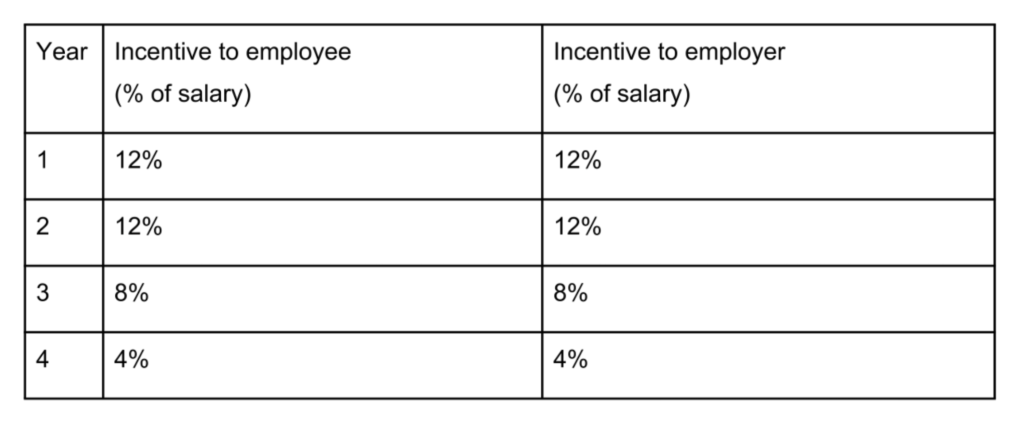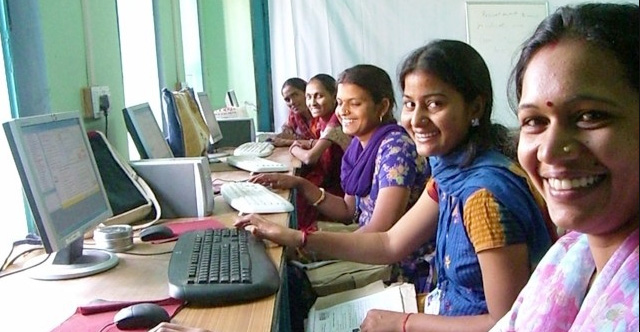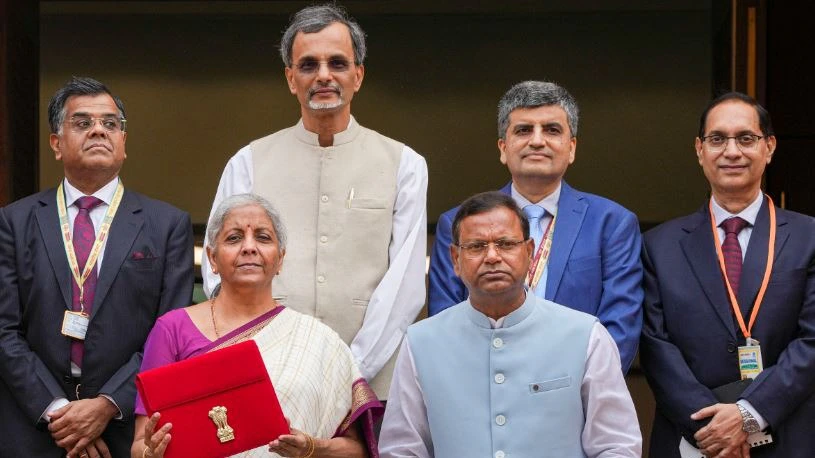India, as the world’s most populous country, possesses a unique advantage : A vast and abundant workforce, and the budget 2024-25 presented by Nirmala Sitharaman aims to optimally utilize this demographic dividend by developing employment schemes focused on specific sectors and skill enhancement, with the goal of transforming our current untrained and incompetent labour surplus, into a skilled and productive workforce.
Coming up with additional employment opportunities will not only help reduce the unemployment rates,but also result in personal income generation of workers. When workers earn more, they then are inclined towards spending the extra income, stimulating demand, thus increasing investment and consumption, driving output and employment to higher levels and leading the economy into a virtuous cycle of growth and economic development.

The budget 2024-24 has introduced three new programs under ‘Employment-related incentives’, which are part of the Prime Minister’s proposal.
1. Scheme A is aimed at first-time employees and intended to assist those who have recently entered the formal job field and typically face an adjustment period before becoming fully efficient workers. Such applicants would recieve a Direct benefit transfer of up to one month’s pay, up to Rs15,000. This initiative is intended to aid more than 2.1 crore individuals, particularly those earning up to Rs.1 lakh per month. However, if the employee is terminated before the 12-month period the subsidy must be refunded, which would be the responsibility of the employer rather than the employee. Whether this would result in an additional cost to the company or it would be collected from the employee and paid to the government remains a mystry.
2. Scheme B focuses on the manufacturing sector and promises to provide incentives to first time workers as well as employers based on their EPFO payments. It is expected to benefit up to 30 lakh youngsters by boosting employment of freshers in this industry, creating openings in the labour market for them. Eligible candidates would receive an incentive over a period of 4 years (in addition to the incentive received in scheme A)

3. Scheme C focusses on employer support and will provide companies with a compensation of up to Rs 3,000 per month for each additional employee earning up to Rs 1 lakh. This policy aims to incentivise employers to recruit more and more workers at greater pay, and it is intended to expand employment by 50 lakh.

For interns, usually unpaid students or unskilled professionals joining the industry to obtain real-world experience and necessary skills, an entirely different scheme has been established. Sitharaman stated that the government would be creating a policy with the goal of helping one crore students by bringing in paid internship opportunities in top 500 companies with Rs. 5,000 as the stipend and an additional one time payment of Rs. 6,000. The interns would receive comprehensive training and skill sets, with the expense borne by the companies as part of their CSR. The companies will also bear 10% of the overall cost of hiring interns. Additionally, 1000 industrial training facilities have been asked to modernise and implement programs and evaluate already offered courses, paying particular attention to their quality .In addition, the ‘model skill launch scheme’ restriction on loans for advanced skill development has been raised from Rs 1.5 lakh to Rs 7.5 lakh by the Ministry of Skill Development and Entrepreneurship (MSDE). Moreover, a number of rural banks and non-banking financial institutions have been included to the list to help students in getting loans. Students who do not benefit from any of the initiatives would be offered additional support for procuring loans up to 10 lakh for pursuing studies in domestic institutions.

Furthermore, specific programs have been developed to increase women’s workforce participation. The Mahila Shakthi Kendra (MSK), funded at ₹1,500 crore, aims to empower rural women by improving access to financing, promoting entrepreneurship, and building skills. The Stand Up India Scheme, with a budget of ₹3,000 crore, offers loans ranging from ₹10 lakh to ₹1 crore, business planning support, and mentorship to encourage women and SC/ST entrepreneurs. Additionally, ₹900 crore is set aside for increased maternity benefits and workplace help, and ₹600 crore is dedicated for working women’s hostels to ensure secure and cost-effective housing.
The new measures may appear promising, but also face substantial challenges. The Employment Generation and Support Scheme (EGSS) lacks target areas or industries where jobs are most needed, resulting in inefficient resource allocation and wastage. Dr. Arvind Subramanian, India’s former Chief Economic Adviser, stated, “Without targeted interventions, broad-based schemes may not address the specific needs of high-unemployment regions.” To have a significant impact, the initiative should use data to identify high-unemployment areas and shorten the application and funding processes. The Skill Enhancement and Vocational Training Fund is also facing issues. It might be difficult for the Training programs to keep up with quickly changing industrial demands, and enrollment in said courses may be difficult for people with financial constraints. According to Professor Pronab Sen, former Chairman of the National Statistical Commission, “Training programs need to be continuously updated to keep pace with technological and market changes.” To improve the efficiency of this project, training courses must be updated on a regular basis, and marginalised groups must be provided with easier access to support.
In conclusion, although the intervention has been set with clear objectives and targets in mind, it is not the planning rather the execution that needs to be worked on. To ensure its success and to actually observe the planned results taking place, there success need for proper understanding, implementation and regulation of these policies.
Written by – Simran Chandhoke
Edited by – Rajan Patel




